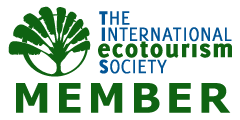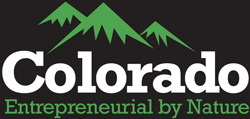Often some of the greatest off the beaten path places to travel do not have the same water standards as we are used to in the US or the Western world and our digestive systems are not accustomed to handle this. US travelers may be familiar with this south of the border being called Montezuma’s Revenge.
In Ghana the Government claims that the municipal water systems in the major cities are safe for drinking but I would still not recommend it. I have gotten away with it a few times but I would not consider it good practice. Even with the modern water treatment systems the problem arises from many people tapping into the water system on their own, often under un-sanitary conditions, and with less than proper piping and equipment. When the water is not running or turned off (happens often even in Accra) the water in these un-official add-ons back flows into the main water systems. Often these un-official systems will be leaking and can have sewage leak into the main system with the back flow.
When I was preparing for my 3 week trip to Ghana back in January, it became apparent that one of the biggest controllable footprints of the trip would be the water container waste. Water in Ghana is usually purchased for consumption in one of two containers:
-
Plastic Water Bottle: These are pretty much the same as bottled water in the West and safe to drink. The two main brands are Voltic (locally produced), and Aquafina (Coca-Cola Product). They usually come in two sizes a half liter and a liter and a half. These can usually be found cold at most resorts, restaurants, and the more official stores. Finding bottles of water like this in rural areas, or villages may be a little more difficult. The positive aspect of the bottled water is that it is very sanitary and the bottles are usually sought after for secondary uses. They will often be filled with palm oil or juices for sale in the markets after they have been emptied of their water. The amount of times that these containers can be used is unknown but eventually they will end up as plastic waste anyway. This is because there is not official recycling system in the country. And when these large water bottles do end up in the land fill or the street they take up a lot of room.
-
Water Sachet: The other main way that you will see water being distributed is through the water sachet, even with these there are two types. One type is prepared at what is called a water factory and these can vary significantly in terms of sanitation standards. The water sachet from a water factory is a half liter bag of water that is sealed and drank by biting off the corner an squeezing the water into your mouth. You will see people everywhere with bags of water hanging from their mouth and the effect in the streets and gutters clogged by the plastic waste, after they are just caste aside when empty. Unlike water bottles there is little secondary use for these after they are emptied of water and thrown aside. On the plus side they take up much less physical space than the water bottles. There are a few companies and idividuals that are finding innovative ways of taking care of this plastic waste minis that you will see throughout the country. Trashy Bags in Accra is turning this waste into backpacks, coin purses and other useful products. I have also heard rumor of someone pressing them into bricks to be used for building.
So after all that you may ask what can I do as a traveler? When preparing for the trip to Ghana in January this was the same question I was asking myself. My father Steve Ryman came up with a good solution that should be pretty easy for anyone to implement. You will need the following supplies:
-
A gallon water container (this makes measurements easier but in theory you could use a half gallon or even a liter)
-
Water purifying drops or tablets, the drops work the best, you can find them here.
-
A water source, using the tap water is your best bet since it will hopefully be clear of sediments.
The way this would work is when we got into a guesthouse or an eco-lodge for the night or wherever we would find a bucket or stop up the sink. The water filter is then used to pump/filter the water into the gallon (or whatever size) container. When the container has been filled use the directions on the purification drops to treat the water with them, and shake it up. Then empty the water into the collapsible water bag. Continue the process until your water bag is full. Now you should have clean water for the next couple of days, you can fill up a couple of water bottles for use during the day or for on hikes. Granted this does take a little more of an initial investment and it works better when you have your own transportation so you can carry the water you have purified, but the benefits from the reduction of waste should clearly outweigh these other issues. All of this equipment can be used for camping at home and for future trips. If you are doing this at bore holes in remote areas it is an interesting way to meet locals too, because they will always wonder what you are doing.







